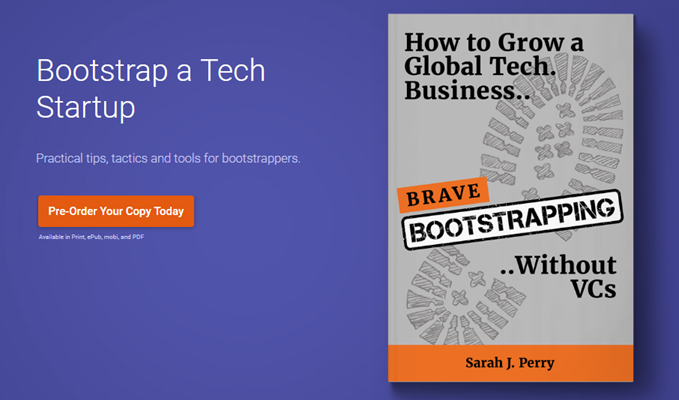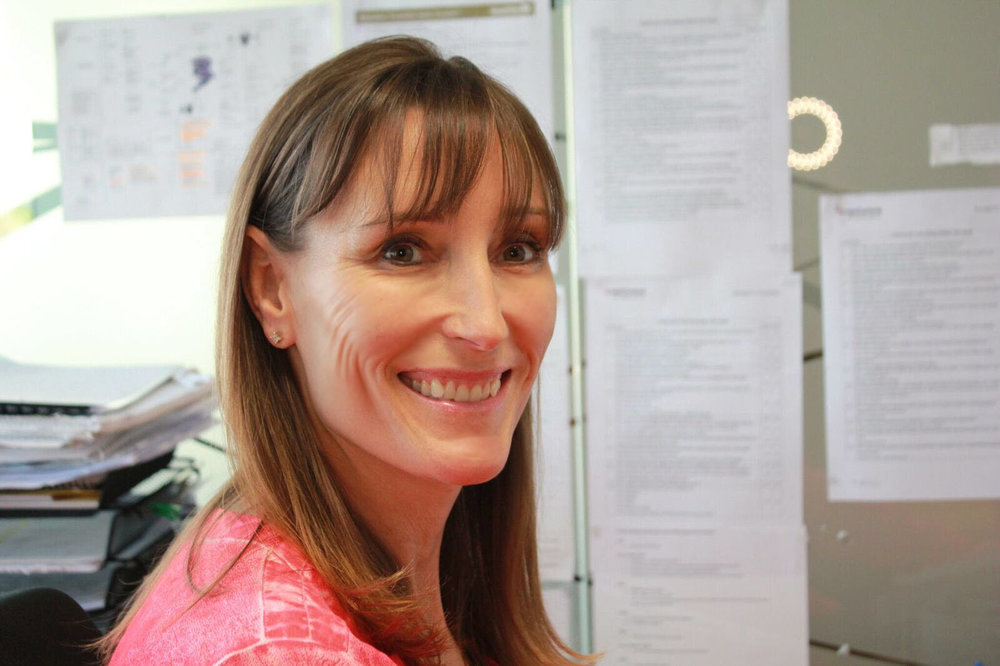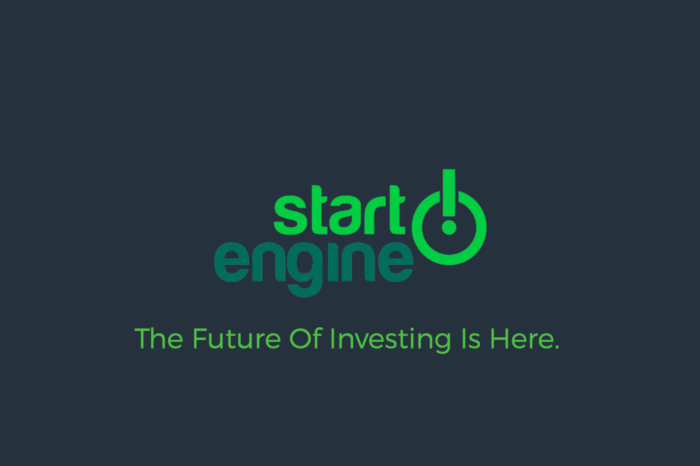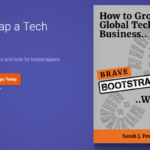Brave Bootstrapping. How to Grow a Global Tech. Business Without VCs

Yesterday we wrote an article about ten of the most profitable bootstrapped startups. As we mentioned in the post, most startup founders think they need to raise lots of money in order to be successful. But that is not always the case. While funding is a key ingredient to starting a any business, there are other factors that contribute to building a profitable startup. Bootstrapping may sound appealing to a lot of founders. The challenge is, there is no formal playbook or step-by-step process to follow. Who is better suited to write a book on bootstrapping than someone who has actually bootstrapped a startup? So when Sarah Perry told us about her new book, we jumped at the offer. We are excited to share her stories of how she built a successful startup. Determined to help organizations improve cut through for employee communications, Sarah co-founded SnapComms in 2007. Within three years, SnapComms grew from zero to hero in the competitive sector of employee communication software, where it is now a global market leader.
Before we dive into the interview with Sarah, we think this book is a must-read for anyone interested in bootstrapping a startup. In this interview, Sarah shared lessons learned on how she co-founded and grew her startup from nothing to over 1.6 million paid users in 75 countries.
So below is our interview with Sarah. Enjoy!

Sarah Perry, CEO of SnapComms – Photo provided by Sarah Perry
Sarah, tell us more about yourself – a little introduction about yourself.
I’m a co-founder, director and former CEO of SnapComms which is 100% bootstrapped and develops enterprise communication software. It has over 1.6 million paid users in 75 countries. I earned an Honors and a Masters degree in Engineering in the UK and have been working in the technology sector all of my career. I have two school-aged children, two cats, two chickens and I’m about to add a horse to the menagerie.
You just published a new book. This is your first book. Could you tell us a little more about why you decided to write the book?
In the early days of SnapComms, every advisor we met (and most business books) seemed to advocate winning investment funding to grow a technology business fast and to consider moving to Silicon Valley to do this. I found it incredibly frustrating that this was the default “best practice.” I had very young children at the time and it was not an option for me to relocate them. I was also realistic about the fact I was female, older and a mother, i.e., not a VC dream stereotype. I wanted to have flexibility around our children and to grow the business on our own terms. We decided that we would win customers to fund our growth rather than to focus on winning VC approval and dollars.
As SnapComms grew and I spoke with other founders, I heard some horror stories from those who had acquired VC funds. Founders were losing control, being sacked from their own businesses and being diluted to very little. These stories are rarely shared because those founders were restricted from speaking about it publicly. VC failures get swept under the carpet, and we rarely hear about them in the media. As a bootstrapped founder (and a bit of a troublemaker) I thought it was time to speak out and ensure that new founders know the downside of venture investment as well as to advocate the benefits and techniques of bootstrapping.
What is the goal of the book?
The goal is to “bring sexy back” for bootstrapping. The media seems to glorify companies getting early-stage investment funding. Winning VC funding is seen as validation of success when in fact 75% of VC-funded start-ups fail, and 95% of VC-funded companies don’t deliver the returns expected (McDermott, John. “Report: 75% of Venture-backed Start-ups Fail.” Inc.com. Accessed December 09, 2017. https://www.inc.com/john-mcdermott/report-3-out-of-4-venture-backed-start-ups-fail.html).
Shows like “Shark Tank” show founders looking excited when they get the sharks to agree to invest. The founders act like they have won a game show, but they haven’t really won anything other than dilution, increased pressure to grow fast and hopefully some investor advice (which is not always guaranteed). Celebrate when you win and retain customers I say!
You mentioned in the book that you were able to bootstrap SnapComms, the company you co-founded, to 1.5 million paid users in 75 countries. Could you please share how you achieved such a success in a short amount of time?
We focused on getting really close to target customers and understanding the problems they faced. We focused on creating a product the solved a defined problem with an ROI attached. We built strong relationships with early customers that endured product and delivery hiccups and built word of mouth referrals. We used inbound marketing as a cost-effective way to generate self-qualified leads (i.e. Search Engine Optimization and useful problem/solution related online content that achieved high visibility in the search results).
Who is the audience for the book and what are the key takeaways?
The key audience is early-stage entrepreneurs looking to start or scale their business. I meet these people through my advisory work, and they have usually bought into the VC playbook without realizing it. It frustrates me and feel it is now my mission to help founders make more informed decisions including the pros and cons and the alternative options. In reality, only 1% of companies get VC funding, so it’s high time there were more books and advice tailored to bootstrappers.
The key takeaways are:
- The downside of VC investment – such as the impact on founder and employee engagement and well-being, loss of founder control, dangerous distraction related to investor communication and expectation management, the potential for “suffocation” by non-executive board members, stress related to extreme growth targets and more.
- The benefits of bootstrapping – such as work-life flexibility, retaining control, growing at your own pace, iterating and experimenting based on customer and market needs, agility and no overriding requirement to exit
- Proven tools and techniques for growing a technology business without investors
Why did you decide to bootstrap instead of seeking funding from external investors?
Apart from not wanting to fit the VC mould we were focused on and excited by winning and serving customers. We saw the VC chase as a distraction from this. It seemed more fun to call the shots and adapt to the market and customer needs rather than to deliver against a VC approved plan.
If you look back in time, what are the critical success factors to bootstrapping?
I tried to capture the critical success factors in the book, and they are represented by the acronym “BRAVE.”
Bold
Resource Aware and Impact Focused
Action
Value for Customers and Each Other
Evolving
B stands for Bold. Not being afraid to do things differently and to take a few measured risks.
R stands for Resource Aware and Impact Focused. This is probably the most important factor at early stage. It’s about finding ways to get the most impact for every single dollar and hour spent by the business and accepting the fact that it won’t be perfect and “everything” won’t get done.
A stands for Action. It’s about getting stuff done. Especially the stuff that impacts the metrics that matter (leads, sales, product delivery, customer renewals). It’s not about impressive business plans and growth projections. It’s about grabbing opportunities as they come and iterating based on what works and what customers want.
V stands for Value for Customers. I think some VC funded companies forget the fundamentals. Business 101 = something of value for the customer at a profit. If satisfied customers don’t pay for something, you don’t have a successful business no matter how big your valuation is.
V also stands for Value for Each Other. Meaning a great culture where people care about each other and help each other out. It’s hard to achieve this if the focus is on extreme growth targets and 10x investor return (which can create a cut-throat environment). A great culture is a competitive advantage for bootstrapped businesses.
E stands for Evolving. Everyone in a bootstrapped business needs to evolve as the business grows. They need to keep learning and keep stretching themselves. Bootstrapped businesses cannot afford many proven experts and instead rely on people who can learn and grow with the business. These people are motivated to learn via online courses or reading a few books, and they bring their passion and creativity to solving problems. Non-proven experts also tend to be more humble which is great for culture too.
What advice would you give the other founders trying to bootstrap their new business?
Look for ways way to monetize early. Think about ways to ask customers to pay for your initial product build and/or to charge for services. Don’t be afraid to work two jobs for a while, it will be worth it in the end. Successful bootstrapped businesses are able to attract higher levels of investment funding on better terms once they have proven themselves or they can choose to remain bootstrapped, and founders can continue to call the shots on their businesses.
What words of encouragement would you like to give to others who are planning to bootstrap?
A “first-to-market advantage” is a reason often given for seeking investors, but it is overrated. You will likely take longer to get to the scale-up stage than VC funded competitors, but you can learn a lot from the ones that crash and burn and benefit from the ones who spend significant dollars educating the market for your product category. Focus on delivering value to customers with a product that solves an identified problem, and you won’t go far wrong.
When is the book going to be available to the public?
“Brave Bootstrapping” will be available on Amazon and at https://www.bravebootstrapping.com/ from mid-March 2018.

